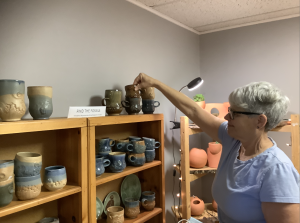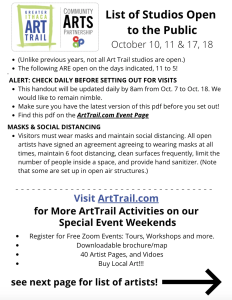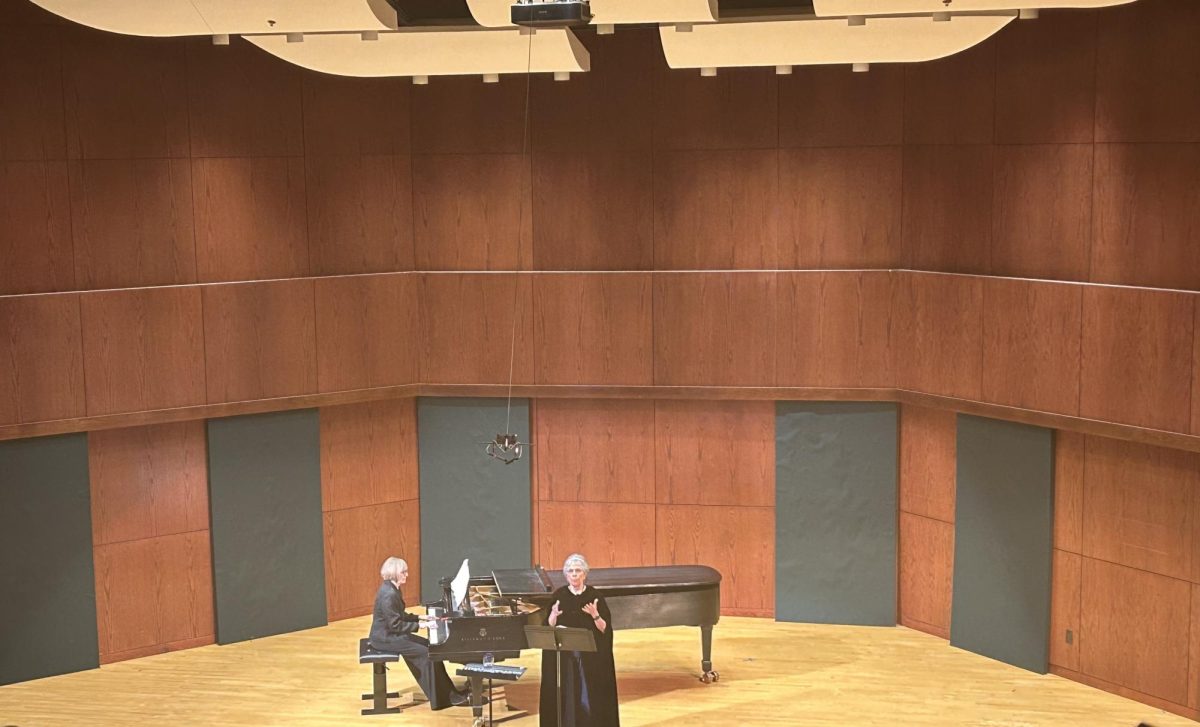
Local ceramicist Kari Zelson Robertson’s studio is located in the basement of her home in Ithaca, accessed through a screen door in her backyard. As a member of the Greater Ithaca Art Trail, she’s placed “Pottery Sale” signs, with guiding arrows, on her street corner and in front of her house to lead potential guests to her workspace. A bottle of hand sanitizer is provided on a table outside.
Robertson is one of 20 artists on the Community Arts Partnership’s Greater Ithaca Art Trail who decided to continue to open her studio amid COVID-19. Typically, 40 artists participate. Having been a part of the trail since her move to Ithaca in 2018, Robertson welcoming the public into her studio is nothing new. This year, however, there have been a variety of changes to operations as a result of the coronavirus pandemic.
On the trail
Since its inception in 1999, the trail has granted local artists the opportunity to widen their clientele and share their artistic spaces with the Ithaca community by opening their studios up to public visits. Artists have been able to host special events, give tours of their studios and sell their work.
“I normally have a lot of people that stop in,” Robertson said. “It’s an opportunity for me to talk to people about what I do and for me to develop a client base so I can keep doing this work.”
“I think that understanding the personality of an artist, or the motivations or the interest they have in their own art is a huge part of the experience of understanding art.
— Robin Schwartz, Program Director of the Community Arts Partnership
Not only is it beneficial for artists’ livelihood, but Robin Schwartz, Program Director of the Community Arts Partnership, said the beauty of the trail is allowing people to speak with the artist who created the work they’re seeing.
“I think that understanding the personality of an artist, or the motivations or the interest they have in their own art is a huge part of the experience of understanding art,” she said.
So when public gatherings started to be restricted amid the coronavirus pandemic, there was a concern with how the trail operations would continue. But, what first appeared as a threat to the trail’s success, ended up introducing artists to an entirely new way of doing things.

Unexpected benefits
Before the coronavirus, Schwartz said artists were required to have a space where the public could come to get an inside look at their artistic process. The pandemic forced Schwartz and other organizers to realize that a physical space was not completely necessary to connect with artists.
Like Robertson, half of the artists on the trail are still allowing in-person visits that follow state guidelines. But the other half of the artists have continued to interact with the community through virtual events over Zoom. Artists can give tours, demos, Q&As and discussions without having to open up their spaces. And not only does this make the trail accessible to artists without a set studio or workspace, but Schwartz said it also allows people outside of Tompkins County to attend these events. They’ve had guests from out of New York state, and even out of the country.
“We’re all learning that we can really expand our audience by going virtual,” Schwartz said.
Moving forward
The response from the community has been positive, Schwartz said, with guests regularly visiting studios on the trail and several first-time trail visitors RSVPing to virtual events. Robertson said she’s noticed her business expanding interestingly and thinks it’s because of people spending more time at home.
“I feel like people are more interested in having fine handmade work in their everyday environment,” Robertson said. “And I think there is at least a segment of society that has at least a little more disposable income because they aren’t traveling or going out.”
Robertson also mentioned how her artistic process shifted because of the pandemic. While the first few months of social distancing were very discouraging, she said that now she’s in the studio quite often and more engaged with her work than ever.
“It’s just rubber-stamped in my brain that I love what I do,” Robertson said.
Now that virtual events have proven to be a positive thing for the program, Schwartz said they will continue to be a major part of operations moving forward. She expects a new crowd of local artists to want to participate now that it is more accessible.
“It’s just a whole new world,” Schwartz said. “I think a lot of arts organizations are always going to do a combination of live and virtual from now on.”

(Phoebe Harms/Ithaca Week)


(Courtesy of https://arttrail.com/maps-studio-guide/)






